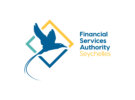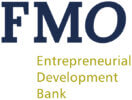Top Strategies for Investing in Africa ETFs
Investing in Africa ETFs can be a rewarding venture. It offers a unique opportunity to tap into the growth potential of emerging markets.
However, like any investment, it requires careful planning and strategy. Understanding the market, evaluating ETF options, and making informed decisions are crucial.
In this guide, we’ll explore top strategies for investing in Africa ETFs. Whether you’re a novice investor or a seasoned pro, you’ll find valuable insights to help you navigate this exciting investment landscape.
Understanding Africa ETFs
An Exchange-Traded Fund (ETF) is a type of investment fund and exchange-traded product. It’s traded on stock exchanges, much like individual stocks.
Africa ETFs offer a way to invest in a broad range of African economies. They provide exposure to multiple sectors and industries within these economies.
Actively and passively managed ETFs are available. The choice between the two depends on your investment goals and risk tolerance.
Understanding the workings of ETFs is the first step in your investment journey.
Africa presents an attractive market for investors. Its economies are among the fastest-growing in the world. This growth potential spans various sectors, from technology to agriculture.
However, investing in Africa comes with its own set of risks. These include political instability and currency fluctuations. It’s crucial to understand these risks before investing.
Despite the risks, the potential for high returns makes Africa a compelling investment destination. Diversification through Africa ETFs can enhance your portfolio’s performance.
When considering Africa ETFs, it’s important to evaluate several factors. These include the ETF’s expense ratio, liquidity, and the underlying index it tracks.
Expense ratios can eat into your returns over time. Lower expense ratios are generally better.
Liquidity refers to how easily you can buy or sell the ETF. ETFs with higher trading volumes are typically more liquid.
The underlying index is also crucial. It determines the ETF’s holdings and sector allocations.
Here are some key points to consider:
- Actively vs passively managed ETFs
- Market capitalization
- Impact of fees on returns
- Historical performance of the ETF
- Tax implications of investing in ETFs
Investing in Africa ETFs comes with certain risks. Political instability and currency fluctuations are two major concerns.
Political instability can lead to economic uncertainty, affecting the performance of ETFs. Currency fluctuations can impact the value of your investment when converted back to your home currency.
It’s crucial to consider these risks and develop strategies to mitigate them when investing in Africa ETFs.
Investing in Africa ETFs involves several steps. First, you need to open a brokerage account. This account allows you to buy and sell ETF shares.
Next, research the available Africa ETFs. Look at factors like expense ratios, liquidity, and underlying index.
Here are some steps to follow:
- Open a brokerage account
- Research available Africa ETFs
- Evaluate ETFs based on expense ratios, liquidity, and underlying index
- Buy ETF shares
Finally, buy the ETF shares through your brokerage account. Remember to monitor your investment regularly.
Investing in Africa ETFs can be a long-term or short-term strategy. Long-term investors aim for steady growth over time. They are less concerned with short-term market fluctuations.
Short-term investors, on the other hand, aim to profit from short-term price changes. They need to closely monitor market trends and news.
Staying informed about market news and trends is crucial for investing in Africa ETFs. This includes understanding geopolitical events, economic trends, and sector-specific news.
Investors should also monitor global economic trends. These can significantly impact Africa ETFs and the broader African market.
Investing in Africa ETFs can be a rewarding venture. It offers a unique opportunity to diversify your portfolio and tap into emerging markets.
However, it requires careful planning, research, and ongoing monitoring. Always stay informed and make well-thought-out investment decisions.




















































